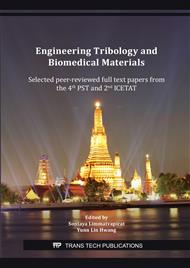p.123
p.129
p.137
p.144
p.153
p.164
p.170
p.176
p.182
Metallurgical Behavior of Amorphous Alloy during Annealing at Different Temperatures via Molecular Dynamics Simulation
Abstract:
The mechanism of annealing-induced amorphization of metallic glass is investigated in this study via molecular dynamics simulation. Spherical nucleuses of Cu–Ni–Al alloy with a face-centered cubic structure are embedded to simulate nanograins in Cu–Ni–Al amorphous alloy; subsequently, the material is annealed at different temperatures. The results show that the critical radius for nucleation at temperatures above the glass transition temperature (Tg) affected the behavior, grain growth, and annihilation of nanograins in the Cu–Ni–Al amorphous alloy during annealing. When the temperature increased, the critical radius for nucleation increased as well. This causes the small nanograins to annihilate quickly and the large nanograins to develop rapidly. When the annealing temperature is higher than Tg, part of the crystal nuclei, which is smaller than the critical radius, can be eliminated. The crystallinity of the metallic glass decreased, and the minimum crystallinity is attained after a period of annealing simulation. Subsequently, as the residual effective nanograins began developing, the crystallinity of the amorphous metal increased again. Therefore, the annealing duration time is critical to the crystallinity of the amorphous alloy after annealing.
Info:
Periodical:
Pages:
153-163
Citation:
Online since:
October 2021
Authors:
Price:
Сopyright:
© 2021 Trans Tech Publications Ltd. All Rights Reserved
Share:
Citation:


